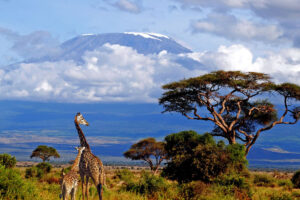Tanzania has secured 60 hectares of land in the Democratic Republic of Congo (DRC) to develop a dry port, aiming to enhance cargo movement along the central corridor and boost transshipments at Tanzanian ports.
The newly acquired land will facilitate the construction of a dry port, serving as a logistics hub for cargo arriving from Tanzania’s ports and destined for the DRC and landlocked neighbors like Burundi.
This development comes in response to a significant increase in cargo destined for the DRC, which reached 3.4 million tonnes last year.
The Port of Dar es Salaam, which is linked to the Central Corridor, has been intensifying its competition with Kenya’s Port of Mombasa, part of the Northern Corridor.
Dar es Salaam has been enhancing its efficiency and competitive edge to attract more cargo through the Central Corridor.
The formalisation of the land acquisition occurred during a meeting where Marc Ekila Likombo, the DRC’s Minister of Transport, handed over the documentation to Prof Godius Kahyarara, Tanzania’s Permanent Secretary in the Ministry of Transport.
This initiative forms part of Tanzania’s broader strategy to strengthen economic ties and improve logistical connections with neighbouring countries.
The development of dry ports is intended to streamline transit cargo management, reduce congestion at Dar es Salaam Port, and expedite the movement of goods to and from the DRC.
This project is a key component of the Tanzania Ports Authority’s master plan to enhance port infrastructure and operational efficiency.
The dry ports will accelerate clearance and shipping processes, benefiting traders and improving trade efficiency between the two nations.
While the Great Lakes countries have historically favored the Northern Corridor via the Port of Mombasa, there has been a shift with some landlocked neighbors now routing their cargo through the Central Corridor and Dar es Salaam.
The Central Corridor, spanning 1,300 km, begins at the Port of Dar es Salaam and serves Tanzania, Zambia, Rwanda, Burundi, Uganda, and Eastern DRC.
In contrast, the Northern Corridor, stretching 1,700 km, starts from the Port of Mombasa and serves Kenya, Uganda, Rwanda, Burundi, and Eastern DRC.
Source: allafrica.com














